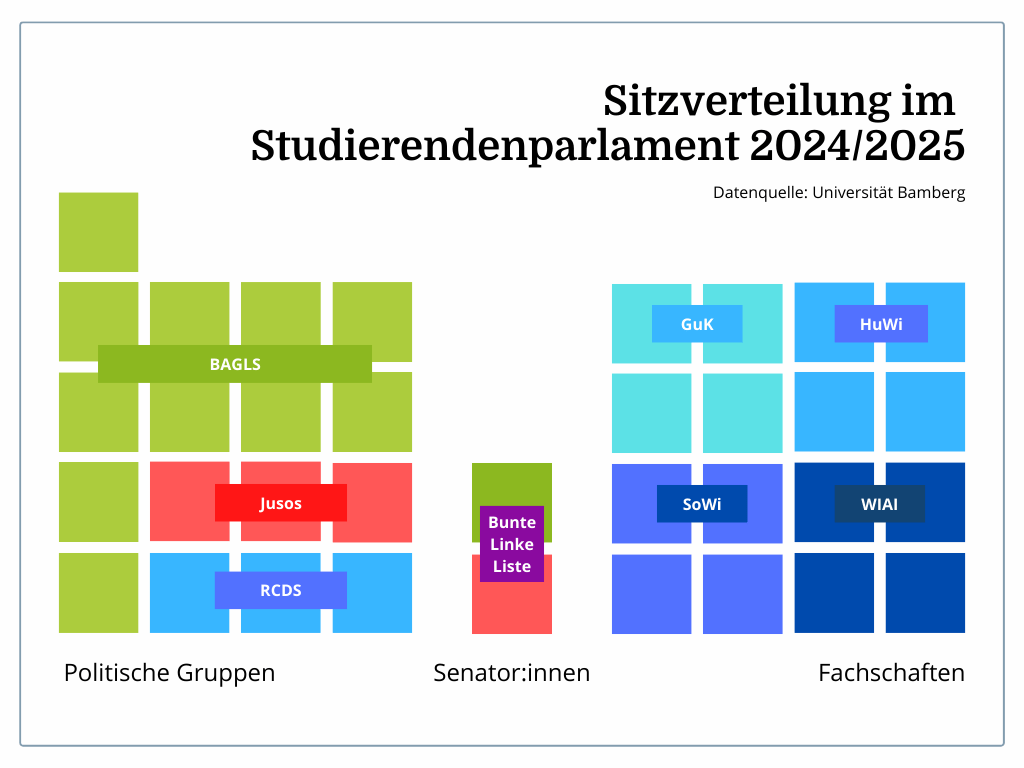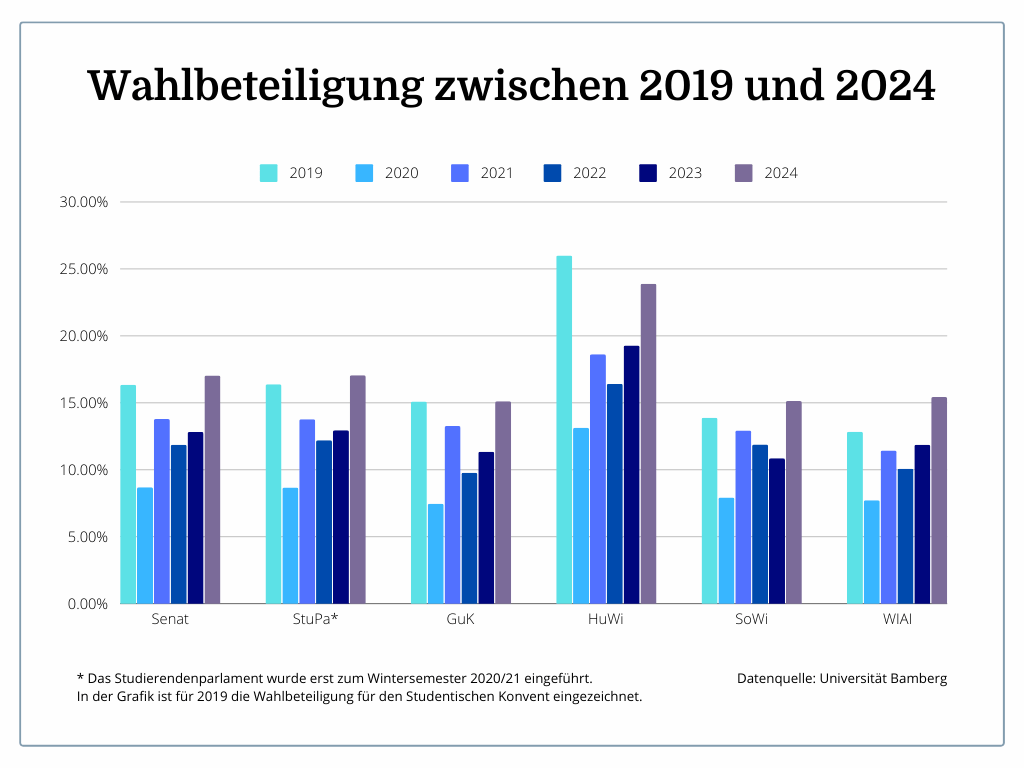17 % Voter Turnout!
The university elections in the summer of 2024 are over. You have decided: These are the results for the student councils, the student parliament and the Senate in a nutshell.
Student Parliament
The distribution of seats in the student parliament has changed only slightly. After the Liberal University Group and the AStA list did not run again, the three remaining lists were each able to gain one seat. The Bamberg Green-Left Student Initiative (BAGLS) remains the strongest force with 11 parliamentarians. The Juso-Hochschulgruppe (Jusos) and the Ring Christlich-Demokratischer Studenten (RCDS) each won three seats. The new student parliament meets for the first time on 4 July and is officially in office from 1 October.

Senate
Both seats in the Senate will also remain with the Bunte Linke Liste. From 1 October 2024, Antonia Schmutterer (Jusos) and, for the first time, Elias Leikeb (BAGLS) will represent the students in this high-ranking body. They are therefore also members of the University Council, the Student Parliament and the Speakers’ Council.
Student Councils
The student representatives (or deputies) of the four faculties are as follows:
- Fachschaft GuK: Paul Josewsky and Svenja Seher
- Fachschaft SOWI: Moritz Raith and Merle Bögeholz
- Fachschaft Huwi: Lilli Herbelßheimer and Nadja Rahman
- Fachschaft WIAI: Theresa Knoll and Laetitia Hilgendorf
With the exception of the Huwi Student Council, the voters approved the election proposals.
Voter Turnout
Probably the most surprising figure of the election is 17%. With this turnout (for the Senate and StuPa, faculties see chart), the elections are back to pre-pandemic levels for the first time. In some cases, the turnout is even slightly higher than in 2019.

Even if 17% doesn’t look like much for a normal election, this is an increase of more than four percentage points. The many information offerings such as the Insta-Lives with the student councils on the university account, the election helper from feki.de, the reporting by Ottfried and also the offerings of the student representation themselves are likely to have contributed to this.
On our own behalf, we would therefore like to thank everyone who publicised the election – and above all those who ultimately cast their vote. We wish all those elected every success in the next legislative period.

